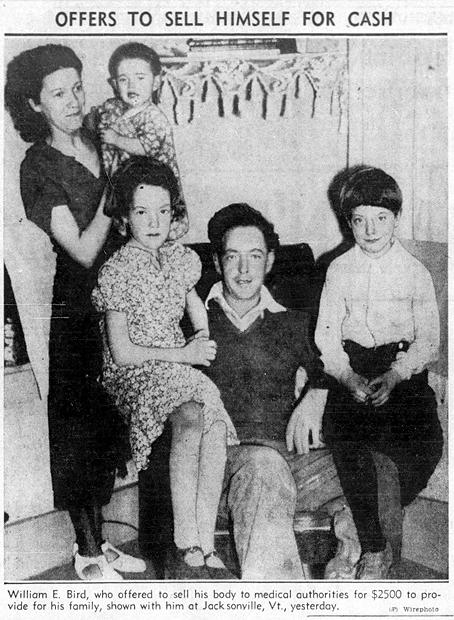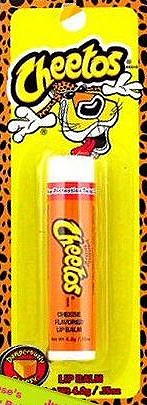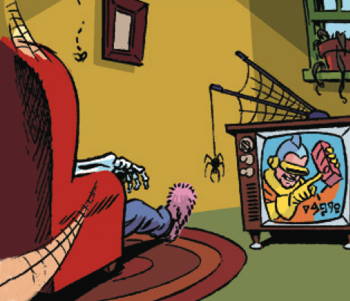September 2019
September 11, 2019
Cecil Jensen’s ELMO
I'm about thirty pages into this book, and can't recommend it highly enough. Pure hilarious surrealism.
Read a long article about the strip here.
Posted By: Paul - Wed Sep 11, 2019 -
Comments (0)
Category: Comics, Outsider Art, Surrealism, 1940s
September 10, 2019
Cheetos Pareidolia
I promise this will be my last Cheetos-themed post for a while. But for some reason, I've been coming across a lot of weird stuff about Cheetos recently.The latest is Cheetos pareidolia, which is the phenomenon of Cheetos that look like things. Often these unique Cheetos end up on eBay, where they command high prices. For instance, right now, for only $650, you can buy a Cheeto shaped like a shrimp.

In 2017, a man found a Cheeto shaped like the Virgin Mary, and he promptly put it up for sale.

Also in 2017, a Cheeto shaped like the gorilla Harambe almost sold for $100,000.

And some, such as photographer Andy Huot, find inspiration in the many shapes of Cheetos. Huot has an Instagram page dedicated to what he calls 'cheese curl art'. Below is his version of the March of Progress, rendered in Cheetos.

Posted By: Alex - Tue Sep 10, 2019 -
Comments (1)
Category: Art, Junk Food, Pareidolia
Follies of the Madmen #443

A toilet seat is never, ever going to resonate with "jewels."
Source.
Posted By: Paul - Tue Sep 10, 2019 -
Comments (4)
Category: Business, Advertising, Domestic, Interior Decorating, Body Fluids, Excrement, Flatulence, 1960s
September 9, 2019
The Man Who Wanted to Sell Himself to Science
Like a lot of people during the great depression, William Bird of Jacksonville, Vermont had fallen on hard times. He was out of work, heavily in debt, and facing eviction. He feared he would soon be unable to feed his wife and three children. So Bird came up with a plan. He would sell himself to science.
Los Angeles Times - Nov 15, 1936
He announced his offer in November 1936 by sending a letter to the local press. It read, in part:
If there is some doctor or group of doctors or scientists who’ll advance me $2500, I’ll agree to pay it back in two years. I have to sort of sell or mortgage myself because that’s the only security I can put up.
Now, if I failed to pay back the money when the time was up, I’d let them do anything they want with me. I’d let them try and kind of experiment on me.
Soon he sweetened the offer by specifying that it would be all right with him if he didn't survive the experimentation process. Naturally, his wife was opposed to the whole idea.
The media spread his unusual offer nationwide. Reporters noted that he was a prime physical specimen — six feet tall, 175 pounds, and a sturdy workman of good habits. In other words, excellent guinea pig material.
An anonymous Texan took sympathy on Bird and sent him $10. However, the scientific community wasn't tempted. No doctors took him up on his offer.
Although Bird didn't manage to sell himself as a human guinea pig, his story nevertheless had a happy ending. Within days of making his appeal, Bird was given a job on a construction project. He said, "I don't know who was responsible for giving me work, but I sure appreciate it." But he also noted that, despite now having a job, his offer still stood. He was still willing to sell himself to science, should some doctor ever want to take him up on it.

Los Angeles Times - Nov 18, 1936
Posted By: Alex - Mon Sep 09, 2019 -
Comments (2)
Category: Science, Experiments, 1930s
HERCULES IN NEW YORK
Wikipedia page.
Posted By: Paul - Mon Sep 09, 2019 -
Comments (1)
Category: Body Modifications, Celebrities, Ineptness, Crudity, Talentlessness, Kitsch, and Bad Art, Movies, Foreign Customs, 1960s
September 8, 2019
Cheetos Fashion
I didn’t realize this when I posted yesterday about Cheetos lip balm, but it turns out that this past week Cheetos announced it would be hosting the brands first-ever runway show, as part of New York Fashion Week. From the press release:

Posted By: Alex - Sun Sep 08, 2019 -
Comments (1)
Category: Fashion, Junk Food
Astra No. 8
Weirdness galore, plus cheesecake! What more could you ask? All sponsored by the UK Air Force.
Posted By: Paul - Sun Sep 08, 2019 -
Comments (0)
Category: Beauty, Ugliness and Other Aesthetic Issues, Daredevils, Stuntpeople and Thrillseekers, Movies, Sex Symbols, 1950s
September 7, 2019
Cheetos Lip Balm
A number of sites (such as USA Today) list Cheetos Lip Balm as one of the greatest product flops of all time. I don't agree. It was definitely weird, but I can't find any evidence it flopped.Some context: it came on the market in 2005, created by Lotta Luv, a New York cosmetics company that specialized in licensing flavors from well-known brands. Some of the other odd lip-balm flavors they offered included Hostess Ding Dongs, Cracker Jack, Junior Mints, fourteen flavors of Snapple, and Lay’s Sour Cream and Onion. Their target market was girls 8 to 14. Apparently, young girls loved these weird lip balms.
As far as I can tell, the Cheetos lip balm remained available until 2011, which doesn’t seem like a flop.


Arizona Daily Star - Mar 18, 2004
Posted By: Alex - Sat Sep 07, 2019 -
Comments (0)
Category: Products, Junk Food
Healthiest US Pair

This is quite a distinction conferred by the 4-H congress of Chicago. I assume they examined every person in the USA before deciding.
Source.
Posted By: Paul - Sat Sep 07, 2019 -
Comments (0)
Category: Awards, Prizes, Competitions and Contests, Health, 1930s
September 6, 2019
Bacon Vending Machine
In 2018, Ohio State University became home to the world’s first bacon vending machine. It was a promotional stunt dreamed up by the Ohio Pork Council.Although the machine got lots of publicity, I'm having a hard time figuring out what exactly came out of the machine. As far as I can tell, it wasn't a piece of sizzling, freshly-cooked bacon. Instead, it was a slice of pre-cooked, cold bacon. Still, it was bacon.
The stunt was only a limited-time affair, but the machine proved so popular that one is now being installed at Buckeyes' Stadium.
More info: Saturday down South, OSU Agricultural College, OSU Dept. of Animal Sciences

Posted By: Alex - Fri Sep 06, 2019 -
Comments (4)
Category: Inventions, Bacon
| Get WU Posts by Email | |
|---|---|

| Who We Are |
|---|
| Alex Boese Alex is the creator and curator of the Museum of Hoaxes. He's also the author of various weird, non-fiction books such as Elephants on Acid. Paul Di Filippo Paul has been paid to put weird ideas into fictional form for over thirty years, in his career as a noted science fiction writer. He has recently begun blogging on many curious topics with three fellow writers at The Inferior 4+1. Chuck Shepherd Chuck is the purveyor of News of the Weird, the syndicated column which for decades has set the gold-standard for reporting on oddities and the bizarre. Our banner was drawn by the legendary underground cartoonist Rick Altergott. Contact Us |

